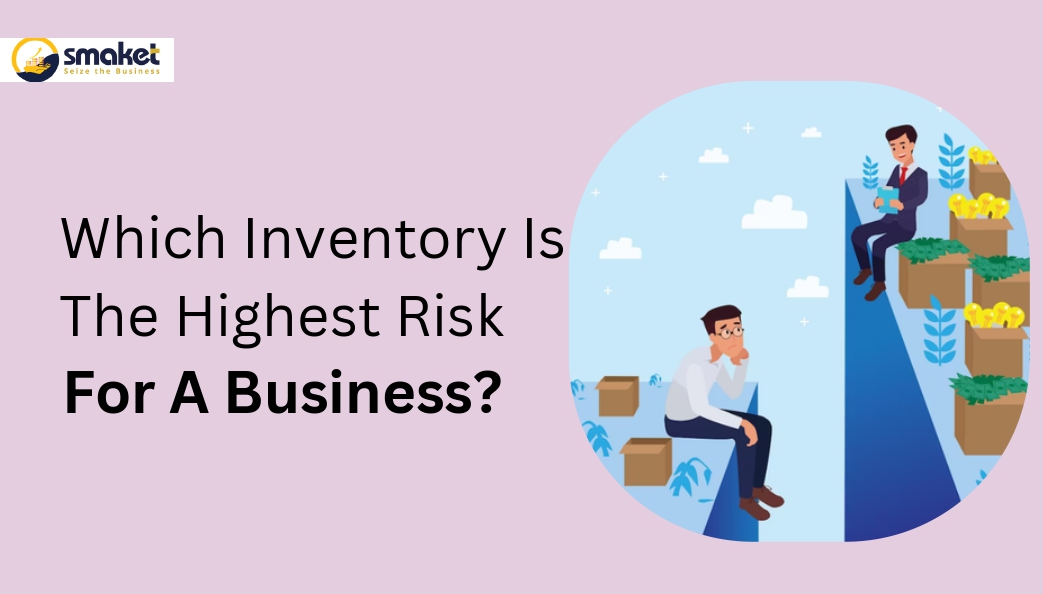Inventory management is a crucial part of running a successful business. While inventory is essential to a business’s operations, it can also pose significant risks if not managed properly. In this blog post, we will explore the types of inventory that pose the highest risk to a business and how to manage them.
Every business, big or small, deals with inventory. Whether you’re a retailer, wholesaler, or manufacturer, inventory is one of the key aspects of your business. However, not all inventory carries the same level of risk. In this comprehensive guide, we’ll take a closer look at the types of inventory that are most susceptible to damage, loss, or theft.
Perishable Inventory:
Perishable inventory, such as food or pharmaceuticals, has a limited shelf life and can spoil or expire quickly. Failure to manage perishable inventory can result in significant losses for a business. Proper inventory management, such as first-in-first-out (FIFO) or first-expired-first-out (FEFO) systems, can help reduce the risk of spoilage or expiration.
High-Value Inventory:
High-value inventory, such as jewelry or electronics, can also pose a significant risk to a business. The theft or loss of high-value inventory can result in a significant financial loss. Proper security measures, such as locked storage, surveillance cameras, or security personnel, can help minimize the risk of theft or loss.
Seasonal Inventory:
Seasonal inventory, such as holiday decorations or summer merchandise, is at risk of becoming obsolete if not sold within a specific time frame. Overstocking on seasonal inventory can result in inventory losses if the demand is lower than expected.
Damaged Inventory:
Damaged inventory can occur during transportation, storage, or handling. It can result in the loss of product value and can be difficult to sell. Damaged inventory must be written off, resulting in inventory losses.
Outdated Inventory:
Outdated inventory, such as obsolete technology or expired products, poses a risk to businesses. This inventory can’t be sold, and it takes up valuable storage space, resulting in additional costs to the business.
Flammable and Hazardous Inventory:
Flammable and hazardous inventory, such as chemicals or explosives, poses a significant risk to a business in terms of safety and liability. Failure to store and handle these types of inventory correctly can result in fires, explosions, or environmental damage. Proper handling and storage, such as keeping these items in fire-resistant or explosion-proof containers, can help reduce the risk of accidents and liability.
Inventory Stored in Unsecured Locations:
Inventory stored in unsecured locations, such as warehouses or storage units without proper locks or security, can also pose a significant risk to a business. Theft, damage, or loss of inventory stored in unsecured locations can result in significant financial losses. Proper security measures, such as locking storage units or hiring security personnel, can help reduce the risk of theft and damage.
What is the difference between inventory risk and inventory turnover?
A business uses the metric of inventory risk to measure its risk. The company calculates it by dividing the cost of its inventory by its net sales. If the cost of a company’s inventory is higher than the sales of a company, there is a risk that the company will not be able to sell the inventory and will have to write it off.
If the cost of a company’s inventory is lower than the sales of a company, the company has less risk. The company sells its inventory a specific number of times within a period of time, which is known as inventory turnover. They calculate the company’s inventory turnover ratio by dividing the company’s net sales by its inventory.
Conclusion:
Managing inventory is crucial to the success of any business. However, certain types of inventory pose a higher risk than others. Perishable inventory, high-value inventory, flammable and hazardous inventory, and inventory stored in unsecured locations are all examples of high-risk inventory. Proper inventory management, security measures, and handling procedures can help reduce the risk of loss or damage and ensure the success of a business.
FAQ & Related Questions:
1. How is inventory risk calculated?
The company calculates inventory risk as a metric to measure its risk. It calculates this by dividing the cost of its inventory by its net sales. If the cost of a company’s inventory is higher than the sales of a company, there is a risk that the company will not be able to sell the inventory and will have to write it off. If the cost of a company’s inventory is lower than the sales of a company, the company has less risk.
2. What is inventory turnover?
Inventory turnover is the number of times a company’s inventory is sold in a specific period of time. The company calculates it by dividing its net sales by its inventory. Inventory turnover is what you need to make sure your business is running smoothly and is reaching its goals.
3. What are the different types of inventory risk?
Inventory risk is the risk of not being able to sell all the inventory on your shelves & risk is not the same as having too much inventory. this risk is the possibility of not being able to sell all inventory, even if there is too much stock. Inventory risk is the risk that you may not be able to sell all of your inventory.

